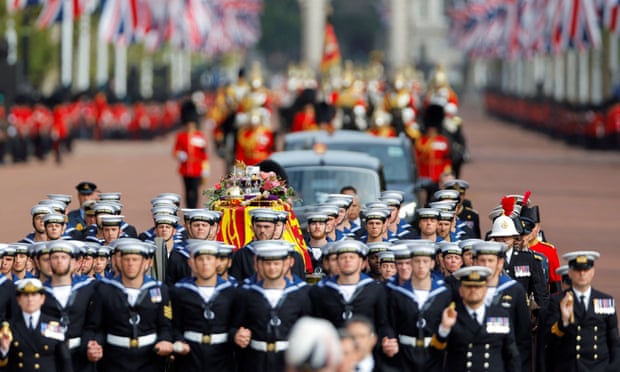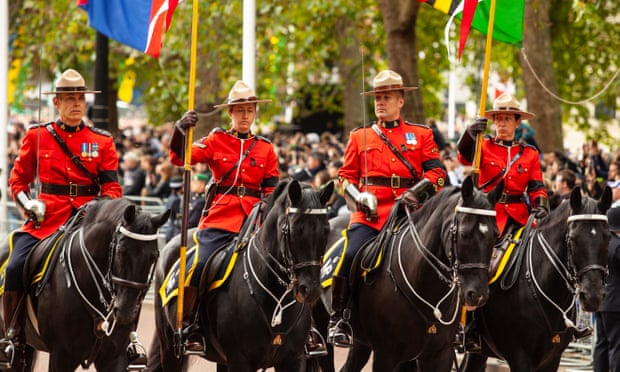4 thousand navy personnel from the UK and Commonwealth nations had been concerned within the Queen’s funeral and parade, essentially the most distinguished ceremonial show by the UK armed forces for the reason that demise of George VI.
Probably the most delicate job fell to eight troopers from the Queen’s Firm, 1st Battalion Grenadier Guards, who at first needed to carry the coffin with precision from its resting place at Westminster Corridor and transplant it on to the gun carriage.
A couple of minutes later, that they had to take action once more, elevating the coffin from the carriage exterior Westminster Abbey, elevating it to their shoulders and bearing it into the guts of the traditional church whereas navigating across the tomb of the Unknown Warrior within the nave.
However essentially the most exacting job got here within the afternoon, when the bearer occasion needed to carry the coffin up three quick flights of steps to enter St George’s chapel in Windsor, aided by a single steadying hand from a ninth soldier on the rear, the closest to a second of stress on a day when occasions unfolded as timetabled.
The Ministry of Defence stated it was not releasing the names of these entrusted to bear the coffin, though they’re drawn from the corporate that has particular duties for safeguarding the physique of the monarch in each life and demise. Sooner or later sooner or later, King Charles will order a change of the unit’s title.

100 and 42 naval rankings – junior sailors – and 6 officers had the duty of pulling and steadying the coffin by a system of white ropes whereas it was atop the 300kg gun carriage, from the journey to the abbey and past in direction of Buckingham Palace, marching at a particular funereal tempo of 75 paces to the minute.
Sailors drawn from naval bases across the UK have had the duty of pulling the gun carriage ever since Queen Victoria’s funeral in 1901. Panicking horses reared up and threatened to topple the coffin, prompting a prince to counsel to King Edward VII that sailors tackle the duty as an alternative. The improvisation of the day caught.
A complete of 1,500 British personnel took half within the procession from the abbey to Structure Hill, though it was led by Royal Canadian Mounted Police and 175 troopers from New Zealand, Australia and Canada. Divided into seven elements, every with its personal band, it included representatives from the military, navy and air power.

Amongst these marching had been Sir Tony Radakin, the chief of defence employees, and the nation’s three service chiefs. “Our position,” the top of the armed forces stated final week in an interview, is “in providing reassurance and stability”, highlighting that the change of monarch had come solely two days after the arrival of a brand new prime minister.
Three thousand navy personnel had been concerned within the ceremonies in London, together with 1,000 lining the routes and 380 in offering guards of honour or different bands. An extra 1,000 had been concerned in receiving the Queen’s coffin at Windsor – and almost 200 horses in each places, whose every day weight-reduction plan ought to encompass 12 to 15lbs of hay.



